Biophysical Analyses for Probing Glycan-Protein Interactions
- PMID: 30484247
- PMCID: PMC7153041
- DOI: 10.1007/978-981-13-2158-0_7
Biophysical Analyses for Probing Glycan-Protein Interactions
Abstract
Glycan-protein interactions occur at many physiological events, and the analyses are of considerable importance for understanding glycan-dependent mechanisms. Biophysical approaches including 3D structural analysis are essential for revealing glycan-protein interactions at the atomic level. The inherent diversity of glycans suits them to function as identification tags, e.g., distinguish self from the nonself components of pathogens. However, the complexity of glycans and poor affinities for interaction partners limit the usefulness of conventional analyses. To cope with such troublesome glycans, a logical sequence of biophysical analyses need to be developed. In this chapter, we introduce a workflow of glycan-protein interaction analysis consisting of six steps: preparation of lectin and glycan, screening of glycan ligand, determination of binding epitope, quantitative interaction analysis, 3D structural analysis, and molecular dynamics simulation. Our increasing knowledge and understanding of lectin-glycan interactions will hopefully lead to the design of glyco-based medicines and vaccines.
Keywords: Frontal affinity chromatography; Glycan microarray; Isothermal titration calorimetry; Molecular dynamics simulation; Nuclear magnetic resonance; Surface plasmon resonance; X-ray crystallography.
Figures
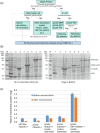
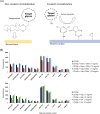
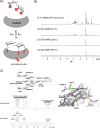
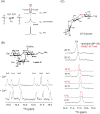
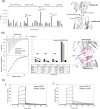
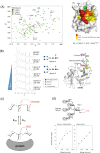


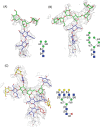
Similar articles
-
Biophysical characterization of lectin-glycan interactions for therapeutics, vaccines and targeted drug-delivery.Future Med Chem. 2014;6(18):2113-29. doi: 10.4155/fmc.14.130. Future Med Chem. 2014. PMID: 25531972 Review.
-
Glycan-Gold Nanoparticles as Multifunctional Probes for Multivalent Lectin-Carbohydrate Binding: Implications for Blocking Virus Infection and Nanoparticle Assembly.J Am Chem Soc. 2020 Oct 21;142(42):18022-18034. doi: 10.1021/jacs.0c06793. Epub 2020 Sep 29. J Am Chem Soc. 2020. PMID: 32935985
-
Parallel quantification of lectin-glycan interaction using ultrafiltration.Carbohydr Res. 2013 Jun 28;375:112-7. doi: 10.1016/j.carres.2013.04.032. Epub 2013 May 7. Carbohydr Res. 2013. PMID: 23701871
-
Distinct roles for each N-glycan branch interacting with mannose-binding type Jacalin-related lectins Orysata and Calsepa.Glycobiology. 2017 Dec 1;27(12):1120-1133. doi: 10.1093/glycob/cwx081. Glycobiology. 2017. PMID: 28973127
-
Overview of Characterizing Cancer Glycans with Lectin-Based Analytical Methods.Methods Mol Biol. 2019;1928:389-408. doi: 10.1007/978-1-4939-9027-6_20. Methods Mol Biol. 2019. PMID: 30725466 Review.
Cited by
-
Glycosylation network mapping and site-specific glycan maturation in vivo.iScience. 2022 Oct 20;25(11):105417. doi: 10.1016/j.isci.2022.105417. eCollection 2022 Nov 18. iScience. 2022. PMID: 36388954 Free PMC article.
-
Tools for mammalian glycoscience research.Cell. 2022 Jul 21;185(15):2657-2677. doi: 10.1016/j.cell.2022.06.016. Epub 2022 Jul 8. Cell. 2022. PMID: 35809571 Free PMC article. Review.
-
Glycan-Based Electrochemical Biosensors: Promising Tools for the Detection of Infectious Diseases and Cancer Biomarkers.Molecules. 2022 Dec 3;27(23):8533. doi: 10.3390/molecules27238533. Molecules. 2022. PMID: 36500624 Free PMC article. Review.
References
Publication types
MeSH terms
Substances
LinkOut - more resources
Full Text Sources

